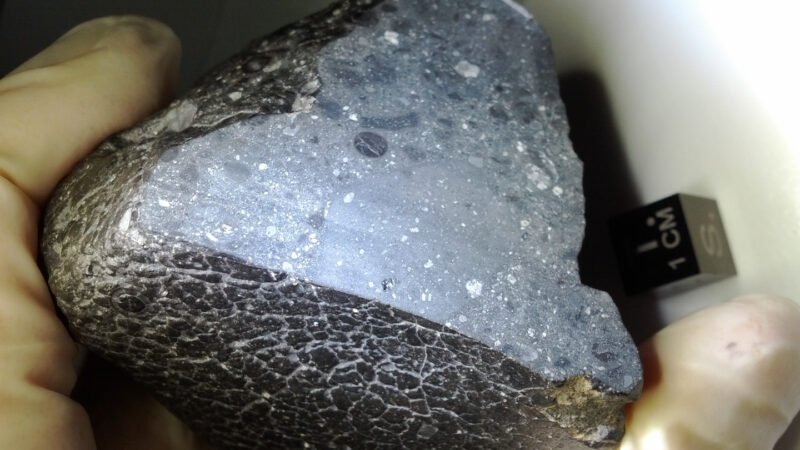Why you shouldn’t use magnets when looking for meteorites

It’s time to drop the magnets, meteorite hunters. The commonly used method for identifying space rocks can destroy scientific information.
Touching even a small magnet to a meteorite can erase any record the rock might have retained about the magnetic field of its parent body, researchers report in the April Journal of Geophysical Research: Planets. And the concern isn’t theoretical: a subset of the oldest known Martian meteorites appear to have already had their magnetic memories wiped, the team showed.
Scientists often turn to meteorites to get a closeup look at other worlds, as well as understand our own. The space rocks can contain traces of planetary atmospheres, the chemical building blocks for life and more (SN: 1/26/21; SN: 4/26/22).
Planetary scientist Foteini Vervelidou uses meteorites from Mars — chunks of the planet that were blasted into space by an impact and later captured by Earth’s gravity — to study its ancient past. Just a few hundred are known to exist. Rarer still are specimens that contain minerals carrying imprints of the Red Planet’s magnetic field, which collapsed about 3.7 billion years ago (SN: 9/7/15). The oldest known Martian meteorites, which date to roughly 4.4 billion years ago, therefore present an “amazing chance to study the magnetic field,” says Vervelidou, of MIT and the Institute of Earth Physics of Paris.
But such opportunities can be readily squandered, Vervelidou and colleagues have shown. The team’s numerical calculations and experiments with earthly rocks — stand-ins for meteorites — confirmed that bringing a hand magnet close to a rock can rearrange the spins of the rock’s electrons. That rearrangement overwrites the imprint of a previous magnetic field, a process called remagnetization.
What’s more, the process appears to happen frequently. The team examined nine meteorites found at different times and places on Earth. All of them are thought to have originated from the same oldest known chunk of Mars, which most likely broke up when it entered Earth’s atmosphere. All had been remagnetized.
The finding is unfortunate, but it’s not surprising, says Melinda Hutson, a meteoriticist at Portland State University in Oregon and the curator of the Cascadia Meteorite Laboratory who was not involved in the research. “Just about everyone wants to stick a magnet on the side of a potential meteorite.”
It is possible to evaluate a meteorite without destroying its magnetic properties. Vervelidou uses a lab instrument called a susceptibility meter, which measures how an object would respond to a magnetic field. And portable versions exist: She and a team of meteorite researchers used one to find nearly 1,000 meteorites on a recent expedition in Chile. Hopefully, Vervelidou says, some of those space rocks will shed light on Mars’ magnetic past.
For all the latest Science News Click Here
For the latest news and updates, follow us on Google News.

